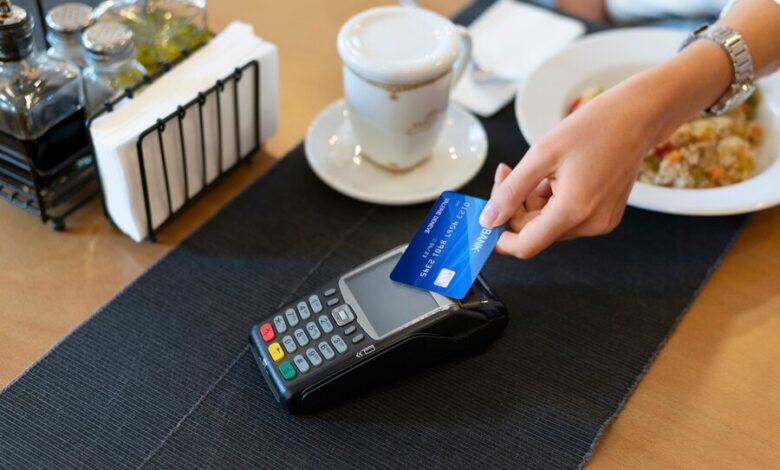Find the Perfect Card Reader for Your Small Business

Choosing the right card reader can be a game changer for your small business. It’s not just about processing payments; it’s about enhancing your customer experience, ensuring secure transactions, and streamlining operations. In this blog post, we’ll guide you through the steps to select the perfect card reader for your needs.
Discover the Best Card Reader for Your Business
Every small business is unique. From the cozy corner café to the bustling retail store, the right card reader can make all the difference. Let’s explore the factors that will help you choose the best one.
Understanding Your Business Needs
Before you start shopping for card readers, it’s essential to understand your specific business requirements.
Type of Business
Are you running a brick-and-mortar store, an online shop, or a combination of both? The type of business you operate will greatly influence your choice of card reader. A retail store might need a stationary reader, while a pop-up shop might benefit more from a mobile one.
Volume of Transactions
How many transactions do you process daily? High-volume businesses require robust and fast card readers that can handle multiple transactions efficiently. In contrast, a small boutique might manage with a simpler, less costly option.
Mobility Needs
Do you take your business on the go? If you participate in markets, fairs, or offer delivery services, a mobile card reader can be invaluable. These devices are compact and can connect via Bluetooth to your smartphone or tablet, allowing you to accept payments anywhere.
Types of Card Readers
Understanding the different types of card readers available can help you make an informed decision.
Traditional Card Readers
Traditional card readers are ideal for businesses with a fixed location. They often include features like receipt printers and multiple payment options. These readers are reliable and can handle a high volume of transactions.
Mobile Card Readers
Mobile card readers are perfect for businesses that need to accept payments on the go. They are small, portable, and connect to your smartphone or tablet. They are great for pop-up shops, food trucks, and service-based businesses.
Smart Card Readers
Smart card readers offer advanced features like connecting to the internet, accepting various payment methods, and integrating with business software. They are suitable for tech-savvy businesses looking for a versatile solution.
Security and Compliance
Security is a top priority when selecting a card reader. Ensuring secure transactions protects your customers and your business.
Importance of Secure Transactions
Secure transactions build trust with your customers. Look for card readers that use encryption and tokenization to protect card information.
Meeting Industry Standards
Ensure that the card reader complies with industry standards such as PCI DSS (Payment Card Industry Data Security Standard). Compliance helps in avoiding fines and enhances customer trust.
Tips for Data Protection
Choose a card reader that offers features like EMV (Europay, Mastercard, and Visa) compliance and contactless payment options. These features reduce the risk of fraud and enhance transaction security.
Cost Analysis
Understanding the costs associated with different card readers can help you make a financially sound decision.
Upfront Costs
Consider the initial purchase price of the card reader. Traditional card readers tend to be more expensive upfront compared to mobile ones. However, they may offer more features and durability.
Transaction Fees
Transaction fees can add up quickly. Be sure to compare the fees charged by different card reader providers. Some charge a flat fee per transaction, while others take a percentage of the sale.
Maintenance
Maintenance costs can vary. Consider whether the card reader requires regular updates, software subscriptions, or physical maintenance. Mobile card readers may have lower maintenance costs compared to traditional ones.
Integration and Compatibility
Choosing a card reader that integrates seamlessly with your existing systems can save time and reduce errors.
Existing Systems
Look for card readers that are compatible with your current POS (Point of Sale) system. This ensures smooth operation and avoids the hassle of switching systems.
Software Compatibility
Ensure that the card reader works with your business software, such as accounting and inventory management tools. Compatibility simplifies data management and reporting.
Future-Proofing
Consider future needs. Choose a card reader that can adapt to new technologies and payment methods. This future-proofs your investment and keeps your business competitive.
User Experience
A user-friendly card reader enhances both customer satisfaction and operational efficiency.
Ease of Use
Select a card reader that is easy to set up and operate. Complicated devices can slow down transactions and frustrate both you and your customers.
Customer Experience
Consider the customer experience. A card reader that offers quick and smooth transactions can improve customer satisfaction and encourage repeat business.
Employee Training
Choose a card reader that requires minimal training for your staff. This reduces the learning curve and ensures that your team can handle transactions efficiently.
Case Studies and Testimonials
Learning from other small businesses can provide valuable insights and help you make an informed decision.
Real-World Examples
Read case studies of businesses similar to yours. See how they chose their card readers and the impact it had on their operations.
Customer Testimonials
Customer testimonials can provide firsthand insights into the performance and reliability of different card readers.
Success Stories
Success stories highlight the benefits of choosing the right card reader. They can inspire and guide you in your selection process.
Conclusion
Selecting the perfect card reader for your small business can enhance your customer experience, improve transaction security, and streamline operations. By understanding your business needs, exploring different types of card readers, and considering factors like cost, integration, and user experience, you can make an informed decision.
Invest in the right card reader today and take your business to the next level.



